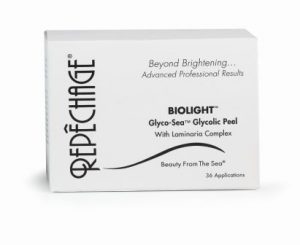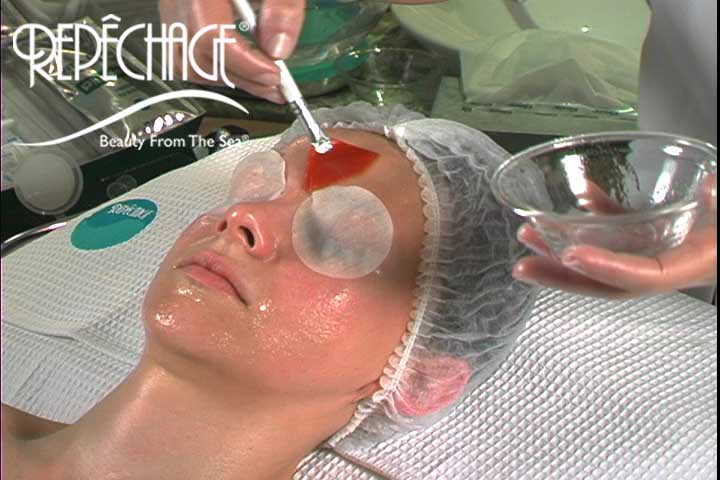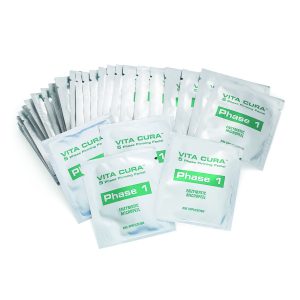Fall is a time for renewal and what better way to help treat your client’s skin then by giving them a fresh start. Exfoliation is an essential piece to maintaining healthy, beautiful skin for your clients. This is not a new concept; in fact, the Ancient Egyptians used abrasive tapes made with alabaster, honey and sour milk to exfoliate, and then abraded the skin with finely ground sand to keep it silky smooth. Luckily for our client’s the beauty industry has made leaps and bounds when it comes to exfoliation!
Why Do We Need to Exfoliate?
While skin exfoliation is a naturally occurring process, most skin types can stand some help. Our skin naturally sheds every 28 days. With age, this process slows which causes dull, tired looking skin. The regular use of exfoliants dissolves dead, flaky skin cells, stimulates collagen production, and builds elasticity. If your skin is continually exfoliated, it’s forced to create new cells revealing fresh, healthy skin cells.
There is a downside to over-exfoliation. Harsh chemical peels can cause:
- Peeling
- Redness
- Irritation
- Blistering
- Burning
- Swelling
- Changes in pigmentation
- Solar Sensitivity
- Scarring
- Crusting
- Numbness
- Infection
(Photo credit: bestofbothworldsaz.com)
When it comes to exfoliation, you need to think of the skin like an apple. An apple with skin looks plump and hydrated. When you peel an apple, it becomes brown and shriveled, that is why it is important when exfoliating not to over do it, your skin is a protective barrier – don’t tear down your client’s defenses!
Why Chemical Exfoliation?
So why use chemical exfoliation? With so many contraindications, you might think it is better to stick with a facial scrub, but this might not be the best solution for your client. Client’s with open lesions for example, could be irritated by over manipulation and granular scrubs. Also, clients with excessive sun damage and aging skin may need a deeper exfoliation. By using gentle, yet effective chemical exfoliation solutions, you will be able to provide you client’s with amazing results, without the harsh side effects.
Chemical Peels I Recommend:
Proteolytic Enzyme: Based on Papain, the proteolytic enzyme derived from the latex of the green Papaya fruit, this exfoliant gently removes uneven old squames, revealing brighter, younger looking skin by digesting dead surface protein. Although most enzymes are not very stable, new stabilizing technology allows us commercial feasibility. Be sure to keep the solution wet by using a hydrating facial spray, this will keep the enzyme active. Do not use a steamer as the heat could deactivate the treatment. I recommend the Repêchage Vita Cura Enzymatic Micropeel.
Glycolic Acid: Glycolic acid is an alpha hydroxy acid (AHA) or fruit acid that occurs naturally in sugar cane. This helps to penetrate the surface layers of the skin and to loosen the dry, thick skin that makes the complexion look aged and dull. I suggest using a formula with 35% Glycolic acid with a pH of 3.5 in a seaweed base. Your clients will still be able to see beautiful results, but they won’t see the skin irritation. I recommend Biolight Glyco-Sea Glycolic Peel.
 Glycolic Contraindications Include:
Glycolic Contraindications Include:
– Pregnant or Breast Feeding
– Rosacea
– Allergy to Salicylic Acid
– Open lesions
– Thin, highly sensitive skin
– Taking Accutane
– Herpes Simplex (Hv1) in active stage
– Atopic Dermatitis
– Chronic Urticaria (hives)
– Somatic diseases in an acute stage including SARS
– Recently have depilatory waxing or laser hair removal
After a chemical exfoliation treatment, it is important to protect and hydrate the skin. I suggest upgrading your client with a hydrating seaweed facial mask and then applying a daytime protection cream – an SPF is also very important to prevent further damage. For client’s who need a lot of repair, have them come in once a week for a treatment for four weeks, and then once a month thereafter. Your client’s are going to see the results and love their glowing new skin!



Great article! I’m a spa consulting expert, and I’m always looking to add great content like this to my blog….Lydia, I just found out about your blog and I subscribed to it. I’d love you to help build a great spa networking group….
http://www.spaconsultingnetwork.com/
thanks again for your great info….Julie M. Pankey, JM Pankey Partners